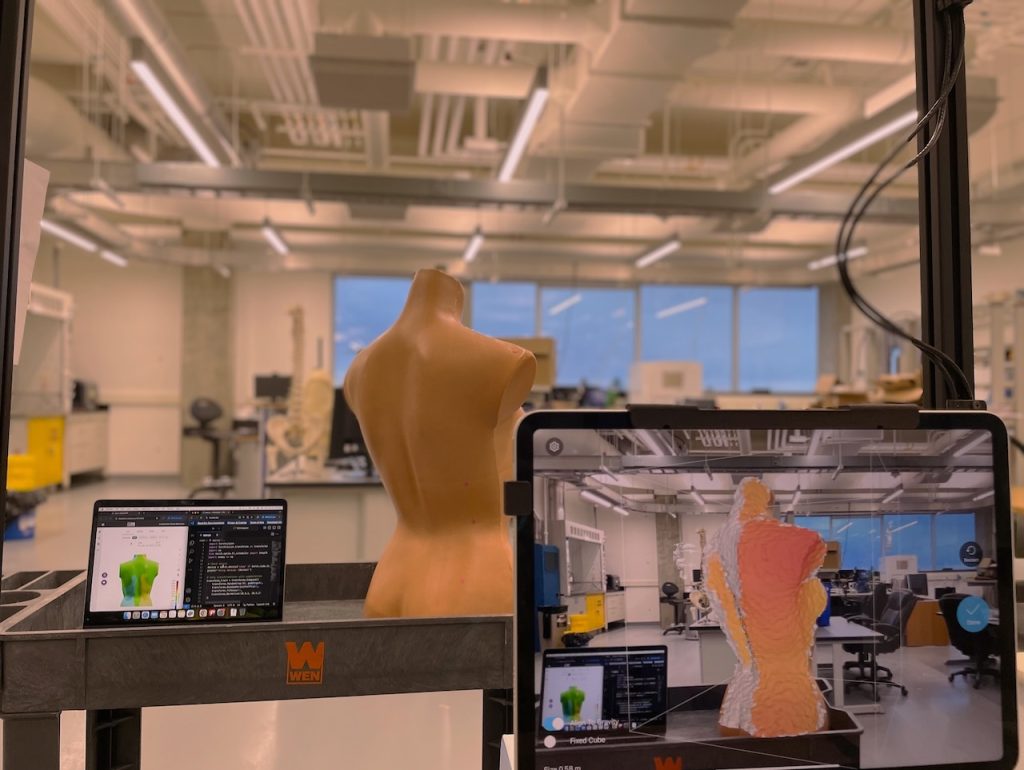Submission 2025
| Submitted by: | Mariam Ezzat |
| Department: | Biomedical Engineering |
| Faculty: | Engineering, Medicine + Dentistry |
This image portrays how I tested the deep learning model for scoliosis classification through the BackSCNR website, an online platform made for scoliosis classification using deep learning. A 3D Structure Sensor connected to an iPad captures a 3D surface scan of the upper torso of a mannequin that is used as a test subject. The scan is uploaded to the platform, where spinal curvatures are analyzed to classify scoliosis severity. The goal of my research is to improve the performance and accuracy of these deep learning classifiers. This setup reflects my hands-on work by combining digital tools and clinical knowledge to improve spinal care.
Was your image created using Generative AI?
No.
How was your image created?
This image was created by positioning a mannequin inside the box frame in the BackSCNR application. A bracket was used to easily attach the Structure Sensor to the iPad, which was mounted on a tripod. I used the BackSCNR app to capture the 3D surface topography scan on the mannequin. Through BackSCNR’s website, users could view data uploaded from the scans. I processed the scan while developing the pipeline through Visual Studio Code on a MacBook. The MacBook showed website output side by side with the development environment for direct comparison. I documented the process by taking a photo with my iPhone 12 of both the mirrored setup alongside the scan display. I used the Microsoft Photos app to process the final image through enhancement to improve its clarity.
Where is the image located?
Dr. Westover’s lab in NREF, University of Alberta, during a scanning test session.

